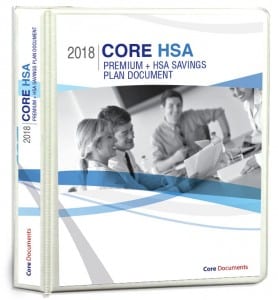Home / Blog / HSA Integral to GOP Obamacare Repeal & Replace
HSA Integral to GOP Obamacare Repeal & Replace
In the 2016 general election, President Donald Trump and members in both houses of the Republican-controlled Congress campaigned on a promise to repeal (and usually, replace) Obamacare as soon as possible. Republicans in the House of Representatives voted to repeal the Affordable Care Act (ACA) wholly or in part more than fifty times since it was signed into law in March 2010.
The call to replace along with repeal was fairly new in the latest election period. It comes from our politicians’ growing recognition that many in our country have become dependent upon key features of Obamacare, and that these now feel like a normal part of health insurance to a lot of people. Those features include coverage for pre-existing conditions, no life-time limits on coverage, young adults remaining on their parents’ policy through age 26, and free preventative care benefits.

While these coverage requirements have their helpful aspects, there is no such thing as a free lunch or truly free health care. Since the ACA requires that all health insurance policies must now include these components in order to be sold in the USA, the insurers’ cost of providing any health insurance policy to anyone has increased and premium rates have soared.
This is the conundrum that faces Republicans as they consider how to restructure health insurance requirements while maintaining their efforts to restore freedom of choice to the health insurance marketplace for both buyers and sellers. Finding a good place to land between the demand for increased levels of health insurance coverage and managing the costs to provide these benefits is no small feat.
Attempted Repeal
After much debate and one failed attempt to bring a bill up for a vote, House members finally crafted a partial repeal and replace plan they believe will work for all Americans. The American Health Care Act (AHCA) was passed by the House on May 4, 2017. but then failed in the Senate. The GOP Congress and Adminisitration now turn to other methods of legislation to lessen the impact of Obamacare, still looking to expand the role of the HSA and HRA through Executive Order.
Meet the HSA
From the very first replacement plans announced by members of Congress, one health plan has consistently appeared: the Health Savings Account (HSA). It remains a centerpiece of the AHCA in its current version and it is likely any changes in the Senate will retain a growing reliance on the HSA to improve Americans’ freedom to choose how, when, and where their health care dollars are spent.
HSAs are growing in popularity and have been for years. Many small employers offer it as an integral part of an affordable benefits package for employees, and lots of self-employed individuals set up their own separate accounts. Since the AHCA plans to enhance and promote the use of HSAs, it is important that small employers understand how the accounts work and how they can offer them to employees.
Most of us are more familiar with the FSA (Flexible Spending Account) than we are the HSA, so we will begin discussing the HSA with a compare-and-contrast analysis of the two.
Purpose and Funding
First of all, the purpose of both is the same: To pay for eligible medical expenses (including vision and dental) that are not covered by a health insurance policy. This can include deductibles, co-pays, prescriptions, and more, like the cost of prescription eyeglasses or a dental exam (but not insurance premiums). Also, both are funded with employee pre-tax dollars; employers may make tax-deductible contributions to both types of plans, too.
Ownership
The differences begin with the use-it-or-lose-it rule that comes with most FSA’s. The HSA has no such rule. In fact, the participant (employee) owns the HSA and can take it with him when he changes jobs or retires.
FICA Savings
Another difference is increased tax savings for both the employee and the with an employer-provided HSA. This amounts to an additional 7.65% of the contribution amounts in FICA savings alone over the employee directly deducting medical expenses (when allowed) on tax forms at the end of the year.
Lower Premiums
The structure of the account is different, too, because the HSA accompanies a high-deductible insurance plan. This brings added savings because the premium for these policies is almost always much lower than more comprehensive plans.
Contribution Limits
Currently, the annual contribution limits (employee and employer combined) for an HSA are $3,400 for people with individual coverage and $6,750 for persons with family coverage. No definite Obamacare replacement is anywhere to be found just yet, but chances are that the “expanded HSA” the Cassidy-Collins plan relies upon refers at least in part to some level of expanded contribution amounts. That would accommodate the higher deductibles and policy limits that will be common once again as true consumer choice is restored to the health insurance marketplace.
See: Limits for 2018 Health Savings Accounts announced
HSA expansion under the AHCA
These limits are set by the IRS in accordance with current law under the ACA, also known as Obamacare. The AHCA will greatly expand the HSA.
For starters, the bill would raise HSA contribution limits to cover the maximum allowable deductible and out-of-pocket limits now standing. This would nearly double the current contributions for both individuals and families.
Other facets of the HSA are up for a big change, too. These include expanding allowed expenses to cover over-the-counter medicines and more or less doubling the annual catch-up contribution by allowing both spouses to contribute.
This expansion ensures that the HSA will continue to be one of the best choices for individuals and families to use in meeting their health coverage needs while taking the fullest advantage of tax savings available, and that makes it an even more valuable tool for small employers to use in attracting and retaining key personnel.
Setting Up an HSA
 Companies with as few as two or as many as hundreds of employees can realize significant tax and premium expense savings with the HSA plan option. When the time comes that you are ready to look into setting up an HSA for your employees, you will be pleased with how easy it is to do.
Companies with as few as two or as many as hundreds of employees can realize significant tax and premium expense savings with the HSA plan option. When the time comes that you are ready to look into setting up an HSA for your employees, you will be pleased with how easy it is to do.
All you need to make the plan DOL and IRS compliant is a Section 125 Premium Only Plan document package with the HSA Module added.
The package includes:
- Resolution to Adopt,
- Plan Document,
- Summary Plan Description (SPD)
- Election Forms,
- Claim Forms, and
- Administrative Instructions.
Implementation and Administration
Once you receive your HSA Plan Document package, all you need to do is to sign as indicated (in two places), give every employee a copy of the SPD, and keep the document stored on site in case of an IRS audit or DOL inquiry. They’re fairly rare, but you only need to keep the compliant Plan Document immediately available in case it should it happen. There is no need to file the plan with any government agency.
Administration of an HSA is pretty simple, too. Funds can be held in the company’s regular account until funds distribution is requested. No separate trust account is needed. Also, amounts are not reported on employee W-2’s at the end of the year.
Agency-required Plan Documents
Since the DOL, IRS, and (for the time being) ACA require Plan Documents be in place to certify an HSA as compliant, you want to be sure to get sound documents from a trusted source. Since 1997, Core Documents has been a leading provider of the highest quality Plan Documents to employers. More than 5,000 lawyers, accountants, and agents use our products for their own clients.

The Core Documents Section 125 Premium Only Plan with HSA package is just $129. That’s $99 for the Section 125 POP document and $30 to add the HSA module. Ordering is easy with either our online ordering or FAX order form.
As always, the knowledgeable and friendly team at Core Documents is available
to assist you throughout the process:
Questions? Please Call Us Toll-Free at 1-888-755-3373
Or email [email protected]
We also have a fill-in FAX order form (.pdf). Click here to complete or to download/print it.
For more information on the HSA option, watch our video (below) and then read these articles from our blog:
FSA, HSA, and HRA: What’s the difference?
Coupling High-Deductible Health Insurance with HSA, HRA, or FSA plans
HSA Administration: Debit Card Coordinates HRA/Health FSA Expense
Video:
Refund Policy: Purchaser understands that goods and services provided by Core Documents, Inc. are non-refundable. Orders cancelled prior to shipping are subject to cancellation fees applied to the cost of goods and services provided during the review, draft, and preparation of your order.